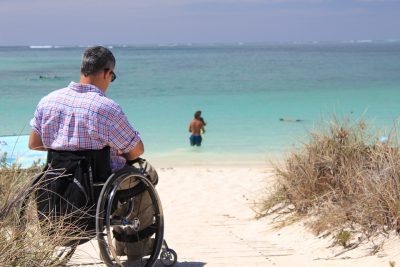Types of Spinal Cord Injuries
 The types of spinal cord injuries are broadly classified into two:
The types of spinal cord injuries are broadly classified into two:
- Complete spinal cord injury- With complete spinal cord injury, the cord can’t send signals below the level of the injury which results in paralysis, or total lack of sensory and motor function below the injury. But the absence of motor and sensory function below the injury site does not necessarily mean that there are no remaining intact axons or nerves crossing the injury site, just that they do not function appropriately following the injury.
- Incomplete spinal cord injury – An incomplete injury means that the ability of the spinal cord to convey messages to or from the brain is not completely lost. It is possible that there is still some sensation and movement below the level of injury.
Table of Contents
Common terms used in spinal cord injury
These are paralysis, paraplegia and quadriplegia or tetraplegia.
- Paralysis: an inability to voluntarily move all or part of the body.
- Paraplegia: a term used to describe the inability to voluntarily move the lower parts of the body. The areas of impaired mobility usually include the toes, feet, legs, and may or may not include the abdomen.
The Christopher and Dana Reeve Foundation further identifies paraplegia as caused by lumbar level injuries and thoracic level injuries. Lumbar level injuries result in paralysis or weakness of the legs. Loss of physical sensation, bowel, bladder, and sexual dysfunction can occur. The shoulders, arms, and hand function are usually not affected. This area of the spinal cord controls signals to the lower parts of the abdomen and the back, the buttocks, some parts of the external genital organs, and parts of the leg. These injuries often require surgery and external stabilization. Thoracic level injuries are less common because of the protection given by the rib cage. Thoracic injuries can cause paralysis or weakness of the legs along with loss of physical sensation, bowel, bladder, and sexual dysfunction. In most cases, arms and hands are not affected. This area of the spinal cord controls signals to some of the muscles of the back and part of the abdomen. With these types of injuries most patients initially wear a brace on the trunk to provide extra stability.
- Tetraplegia or quadriplegia: a term used to describe the inability to voluntarily move the upper and lower parts of the body. The areas of impaired mobility usually include the fingers, hands, arms, chest, legs, feet and toes and may or may not include the head, neck, and shoulders.
According to the Christopher and Dana Reeve Foundation, tetraplegia is a cervical spinal cord injury involving C1 – C8. Sometimes this type of injury is accompanied by loss of physical sensation, respiratory issues, bowel, bladder, and sexual dysfunction. This area of the spinal cord controls signals to the back of the head, neck and shoulders, arms and hands, and diaphragm. Since the neck region is so flexible it is difficult to stabilize cervical spinal cord injuries. Patients with cervical level injuries may be placed in a brace or stabilizing device.
Photo courtesy of LonelyTaws and Pixabay. The image is free for commercial use.
Free Consultation
Learn your Rights. Get Answers. Free.
